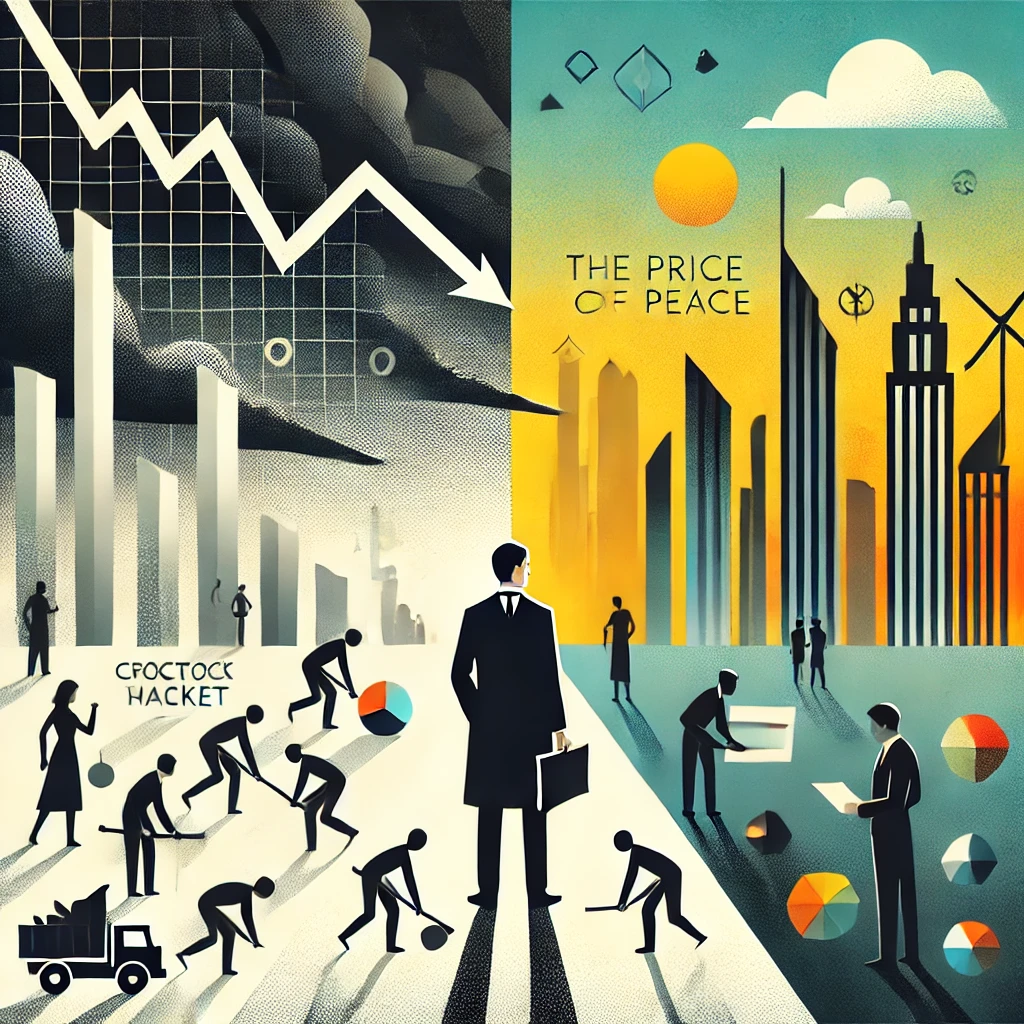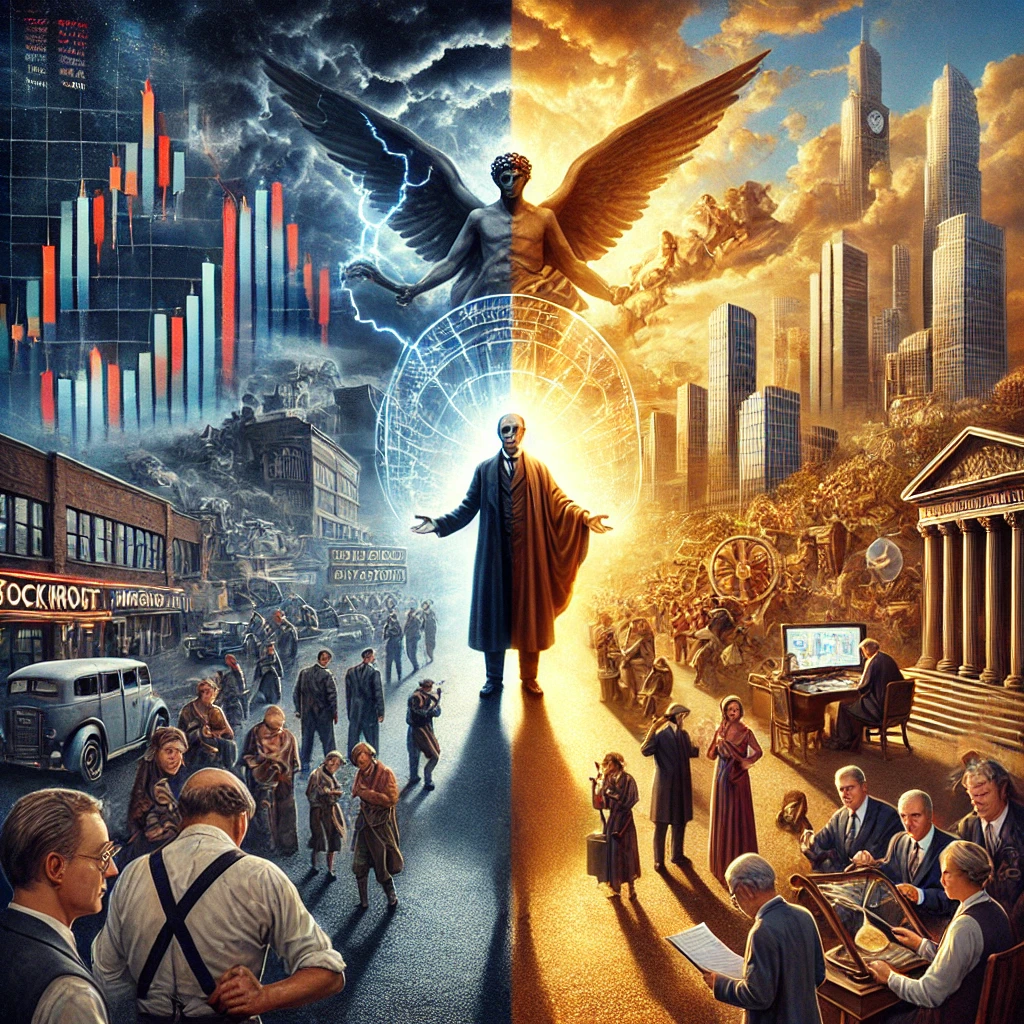
ChatGPT:
The Price of Peace by Zachary D. Carter
Subtitle: John Maynard Keynes and the Fight to Redefine Capitalism
⸻
📘 Overview
Zachary Carter’s The Price of Peace is not just a biography of economist John Maynard Keynes but also a narrative of 20th-century history through the lens of economic theory, political struggle, and moral philosophy. Through Keynes’ life, Carter traces the ideological battle over the nature of capitalism and the state’s role in shaping society. The book delves into Keynes’ personal journey, his contributions to global economic structures, and his continuing influence today.
⸻
🎓 Early Life and Intellectual Formation
Keynes was born in 1883 into an upper-middle-class British family. His father was an economics lecturer at Cambridge, and his mother was a social reformer. At Cambridge, Keynes excelled academically and became part of the Apostles, an elite intellectual society. There, he befriended several figures who later formed the Bloomsbury Group — a collective of writers and artists like Virginia Woolf and Lytton Strachey who profoundly shaped Keynes’ aesthetic and moral sensibilities.
His early exposure to philosophy and art helped him see economics not as a cold science, but as a tool for improving human well-being. This would form the cornerstone of his moral economic outlook.
⸻
✍️ The Economic Consequences of the Peace
Keynes first rose to international prominence in 1919 with the publication of The Economic Consequences of the Peace. He had been part of the British delegation at the Versailles Peace Conference but resigned in protest. He believed that the reparations imposed on Germany were economically shortsighted and morally unjust. The book was a global bestseller and made Keynes a celebrity. Carter notes how this work set the tone for Keynes’ lifelong concern: peace was not possible without economic fairness.
⸻
🧠 Economic Revolution: The General Theory
Keynes’ most important work came in response to the Great Depression. In The General Theory of Employment, Interest and Money (1936), he dismantled classical economic thinking that markets naturally reach full employment. Instead, he argued that governments must intervene to stimulate demand when private investment falters.
This was revolutionary. Keynes rejected the notion that unemployment was a result of individual laziness or structural rigidities. He emphasized that in a crisis, only state spending could fill the gap left by faltering private confidence. This laid the foundation for modern macroeconomics.
⸻
🛡 World War II and the Bretton Woods Vision
During WWII, Keynes returned to government as a top advisor. He played a central role in planning post-war recovery. At the 1944 Bretton Woods Conference, he helped design institutions like the International Monetary Fund (IMF) and World Bank. His goal was to prevent a repeat of the economic chaos that followed WWI.
Keynes wanted a system that allowed countries to run deficits during downturns and maintain full employment without relying solely on gold reserves. Although his full vision wasn’t adopted (the U.S. had more influence), his ideas shaped the structure of global finance for decades.
⸻
⚖️ Keynes vs. Austerity
One of Carter’s key themes is the contrast between Keynes and later champions of austerity and neoliberalism. While Keynes emphasized investment and government responsibility, later policymakers in the 1970s and 1980s — including Milton Friedman and the Chicago School — blamed inflation and stagnation on excessive government intervention.
Keynes believed the state had a moral obligation to ensure economic stability and social equity. Carter shows how Keynes’ humanistic vision was gradually replaced by an ideology that prioritized market efficiency over public welfare.
⸻
🎨 A Life of Aesthetics and Ethics
Carter does not present Keynes solely as a theorist. He emphasizes his personal life, especially his deep connection to the arts and the Bloomsbury circle. Keynes believed in the possibility of a better world — not just economically, but culturally and spiritually. He famously wrote that in the future, people might work less and devote themselves to beauty, knowledge, and friendship.
This idealism separated Keynes from many other economists. His economics served a larger goal: to create conditions for a peaceful, cultured, and meaningful life.
⸻
🧱 The Rise and Fall of Keynesianism
After WWII, Keynesian economics became orthodoxy. Western governments adopted full employment policies, social safety nets, and welfare states. For nearly three decades, these policies produced sustained growth and reduced inequality.
But in the 1970s, a combination of oil shocks and stagflation discredited Keynesian models. Politicians like Reagan and Thatcher embraced neoliberalism, cutting taxes, slashing welfare, and deregulating markets. Carter argues that this shift abandoned the Keynesian concern for peace and equity.
⸻
🔄 Keynes Returns: The 2008 Crisis and Beyond
Carter contends that the 2008 financial crisis marked a turning point. As banks failed and credit froze, governments worldwide turned back to Keynesian ideas: stimulus packages, central bank intervention, and deficit spending. Though often halting and inconsistent, this revival showed the durability of Keynes’ vision.
Even more starkly, the COVID-19 pandemic prompted massive public spending programs and reaffirmed the importance of state action in a crisis — a full-circle return to the questions Keynes first raised.
⸻
✊ Carter’s Argument: The Price of Peace Is Political Will
Ultimately, The Price of Peace is not just a biography — it’s a political call. Carter argues that peace, prosperity, and democracy require deliberate investment. Austerity, he says, is not just economically damaging but politically dangerous, opening the door to extremism and collapse. Keynes understood that economics is about values — and the price of peace is our willingness to prioritize public welfare over private gain.
⸻
✍️ Final Reflections
Zachary Carter’s writing is vivid, accessible, and deeply researched. He brings Keynes to life as a thinker and a person, connecting economic theory with historical events and personal beliefs. The book is as much about the world we live in now as the one Keynes tried to build. By weaving together economics, politics, and morality, The Price of Peace offers both a rich portrait of a towering figure and a blueprint for a better future.
Here are the FAQs based on The Price of Peace by Zachary D. Carter:
1. Who is the main subject of The Price of Peace?
John Maynard Keynes, the British economist known for revolutionizing macroeconomics.
2. What was Keynes’ critique of the Treaty of Versailles?
He argued it imposed excessively harsh reparations on Germany, risking future instability.
3. What is the key idea in Keynes’ General Theory?
That government spending is essential to boost demand during economic downturns.
4. Which global institutions did Keynes help shape?
The International Monetary Fund (IMF) and the World Bank.
5. How does Carter contrast Keynesianism with neoliberalism?
Keynesianism supports government intervention; neoliberalism promotes austerity and market primacy.
6. Why did Keynesian ideas re-emerge in the 21st century?
The 2008 financial crisis prompted governments to adopt Keynesian-style stimulus policies.
7. What was Keynes’ broader vision for economics?
A humane science aimed at promoting well-being, not just managing markets.
8. What does Carter mean by “the price of peace”?
The moral and financial commitment required to uphold democracy and public welfare.
*******
Zachary D. Carter’s The Price of Peace: Money, Democracy, and the Life of John Maynard Keynes has garnered a range of critiques highlighting both its strengths and areas of contention.
Positive Critiques:
• Engaging Narrative: Reviewers commend Carter for transforming complex economic theories into an accessible and compelling story. The New York Times describes it as an “outstanding new intellectual biography of John Maynard Keynes [that moves] swiftly along currents of lucidity and wit.”
• Comprehensive Research: The Wall Street Journal praises the book as “timely, lucid and compelling,” noting that “Carter leaves no reader behind, and he writes with wit and clarity.”
• Contextual Depth: The biography is lauded for situating Keynes within the broader tapestry of 20th-century history, illustrating how his ideas influenced and were influenced by the socio-political landscape. The Washington Post highlights Carter’s ability to “weave compelling narrative, insightful analysis and explication of complex phenomena in prose that is accessible, elegant, almost lyrical at times.”
Negative Critiques:
• Modern Political Analysis: Some critics feel that the latter sections of the book, which delve into post-Keynesian economic policies and their political ramifications, are less balanced. The Wall Street Journal observes that “Keynes and Keynesianism disappear for long stretches of text, as the discussion devolves into an ever-angrier assault on ‘neoliberal’ trade and market-liberalization policies.”
• Adulatory Tone: The New Republic points out that the book “suffers somewhat from an adulatory tone toward its subject,” suggesting that a more critical perspective on Keynes’s ideas and their limitations could have provided a more rounded analysis.
• Treatment of Opposing Views: Some reviewers note that Carter’s portrayal of economists like Friedrich Hayek and Milton Friedman is somewhat dismissive, potentially overlooking the nuances in their critiques of Keynesian economics.
In summary, The Price of Peace is celebrated for its engaging prose and thorough exploration of Keynes’s life and impact. However, some critiques suggest that the book’s latter sections could benefit from a more balanced examination of Keynes’s legacy and the broader economic debates it continues to inspire.

